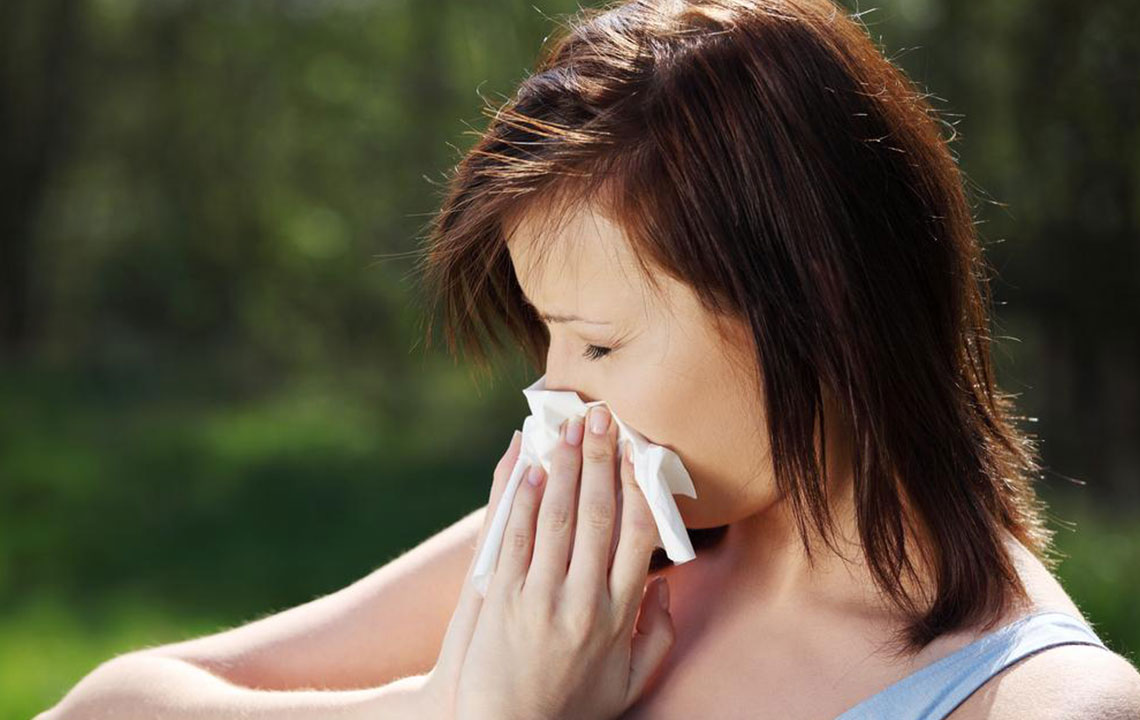Comprehensive Guide to Allergies: Causes, Symptoms, and Effective Management Strategies
This comprehensive guide explores the causes, symptoms, and treatments of allergies, emphasizing prevention and management strategies. Understanding allergens, recognizing symptoms, and leveraging medical and natural remedies can significantly improve affected individuals' quality of life. The article offers detailed advice on avoiding triggers, using medications, and preparing for emergencies, providing essential knowledge for allergy sufferers seeking to control their condition effectively.

Allergies are immune system overreactions to substances that are typically harmless to most people. These substances, known as allergens, can include a wide variety of triggers such as certain foods, pet dander, pollen, mold spores, insect stings, and environmental pollutants. For many, these allergens provoke mild symptoms like sneezing or skin irritation, while in others, they can cause severe and potentially life-threatening reactions. Understanding the underlying causes of allergies, recognizing their symptoms, and exploring effective treatment options are crucial steps for anyone affected by these common but often misunderstood conditions.
The Nature of Allergies
At the core of allergies lies an overactive immune response, often characterized by a genetic predisposition known as atopy. People with atopy tend to develop heightened sensitivities to common environmental substances, mistakenly identifying harmless particles as threats. When exposed to such allergens—like dust mites, pollen from trees, grasses, or weeds, pet dander, certain foods, mold spores, medications, or insect venom—the immune system reacts excessively. This response involves the production of specific antibodies, primarily Immunoglobulin E (IgE), which initiate a cascade of reactions resulting in allergy symptoms.
According to recent health statistics, roughly 10-30% of the U.S. population experiences some form of allergy. Nasal allergies, commonly known as hay fever or allergic rhinitis, impact approximately 20% of Americans, leading to symptoms such as sneezing, nasal congestion, runny nose, and itchy eyes. Asthma, a respiratory condition often linked to allergies, affects over 25 million people in the United States and results in billions of dollars in healthcare costs annually. Food allergies are also significant, with around 8% of children and 5% of adults affected, posing serious health risks including anaphylactic shock.
What Causes Allergies?
The immune response in allergic individuals indicates a hyperactive system that overproduces IgE antibodies when encountering specific antigens. These antigens are often harmless particles that the immune system misidentifies as dangerous. The overproduction of IgE triggers the release of chemical mediators like histamine, leading to inflammation and allergy symptoms such as sneezing, itching, watery eyes, and skin rashes.
In severe cases, exposure to allergens can lead to anaphylaxis, a rapid-onset, life-threatening reaction characterized by difficulty breathing, swelling of the throat and tongue, nausea, rapid heartbeat, and a sudden drop in blood pressure. Immediate administration of adrenaline via auto-injectors (such as EpiPens) is essential in such emergencies.
Understanding the causes of allergies allows individuals to better manage their exposure. For example, avoiding known food triggers through reading labels or following elimination diets can minimize risks. Seasonal pollen allergies can be mitigated through staying indoors during peak pollen seasons, using air purifiers, and wearing masks outdoors. Mold exposure can be reduced by controlling indoor humidity and ensuring proper ventilation.
Medical testing plays a vital role in identifying specific allergens. Skin prick tests, which introduce tiny amounts of suspected allergens under the skin, are widely used. Blood tests measuring allergen-specific IgE levels offer an alternative, especially for individuals with skin conditions or those who cannot undergo skin testing. Keeping a detailed allergy diary and consulting an allergist are recommended steps to develop an effective management plan.
Effective Treatments for Allergies
While allergic reactions can be inconvenient and sometimes dangerous, multiple treatment options are available to reduce symptoms and improve quality of life. The cornerstone of allergy management is avoidance of known triggers. For example, using hypoallergenic bedding, regularly cleaning living spaces, and wearing protective clothing can significantly decrease exposure to dust mites, pet dander, and other common allergens.
Medications form an essential part of allergy therapy. Antihistamines are the most common drugs used to block the effects of histamine, relieving sneezing, itching, and runny nose. Nasal corticosteroid sprays can reduce inflammation in the nasal passages. Decongestants help relieve congestion temporarily. For those with more persistent or severe allergies, immunotherapy (allergy shots) offers a long-term solution by gradually desensitizing the immune system to specific allergens.
Immunotherapy involves regular injections of small amounts of allergens over several years, leading to reduced sensitivity and symptom severity. This treatment has demonstrated effectiveness in conditions like hay fever, insect sting allergies, and certain food allergies under medical supervision.
Emergency preparedness is vital for individuals with known severe allergies. Carrying an adrenaline auto-injector and knowing how to use it can be lifesaving. Additionally, wearing medical alert bracelets and informing friends, family, and coworkers about your allergies enhances safety.
Natural remedies and lifestyle modifications also offer supplementary relief. Saline nasal irrigation rinses, maintaining clean living environments, using dehumidifiers, and minimizing exposure to potential indoor allergens can help manage mild symptoms. Regular cleaning of carpets, bedding, and plush toys reduces dust mites. Pet owners can decrease dander by bathing pets regularly and choosing hypoallergenic breeds.
Understanding and controlling environmental triggers are essential for allergy sufferers. Being proactive by staying informed about seasonal pollen forecasts, keeping windows closed during high pollen times, and avoiding outdoor activities during peak allergen periods can make a significant difference. For mold-sensitive individuals, addressing sources of indoor moisture and improving ventilation are crucial steps.
In summary, allergies are complex conditions stemming from an immune system overreaction to harmless substances. While they can pose serious health risks, advances in diagnosis and treatment provide hope for effective management. Through a combination of avoidance strategies, medications, immunotherapy, and lifestyle adjustments, most individuals can live comfortably and safely despite their allergies. If you suspect you have allergies, consulting with healthcare professionals is the first step towards a healthier, allergy-managed life.





